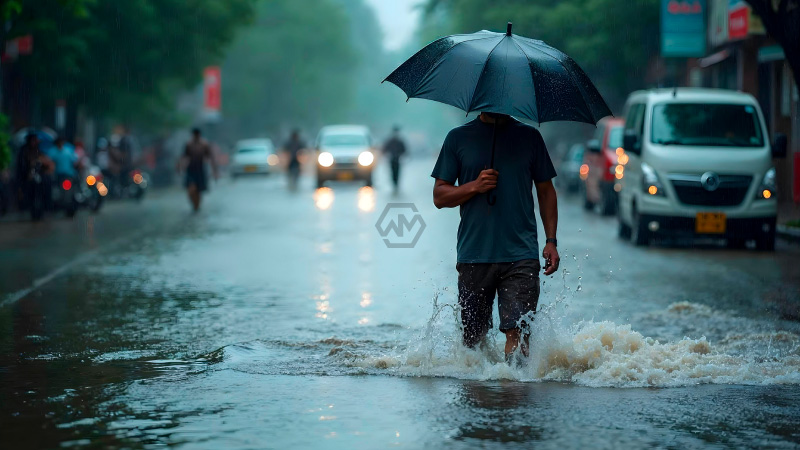- Overnight downpour triggers over 300 flight delays at Delhi Airport, with traffic gridlock across NCR.
- Severe waterlogging in multiple districts prompts IMD red alert and safety advisories.
- Political blame game escalates as AAP’s Atishi accuses BJP of poor monsoon preparedness.
A relentless downpour from late Friday night into Saturday morning has left Delhi and its surrounding NCR region struggling with severe waterlogging, paralyzed traffic, and massive disruptions in air travel.
Amid the chaos, political tensions intensified. AAP leader Atishi accused the BJP-led administration of “mismanagement,” citing both waterlogging in critical zones and an ongoing water shortage in Kalkaji.
Red Alert in Delhi: Monsoon Fury Grounds Flights, Floods Streets, and Fuels Political Spat
The heavy rains, which began around 11 p.m. on Friday, came after days of humid conditions, breaking the spell with intense showers but leaving a trail of disruption. The IMD’s red alert covered multiple districts, including North, West, South, South East, and Central Delhi, with warnings of continued heavy spells over the next 48 hours.
Air travel bore the brunt of the weather impact. According to flight-tracking data, more than 300 departures and arrivals were delayed, although no diversions were reported. Airlines including IndiGo, SpiceJet, and Air India issued passenger advisories, warning of potential delays and urging travelers to monitor real-time flight updates.
On the roads, waterlogging created bottlenecks in several hotspots. The Delhi Traffic Police flagged congestion on New Rohtak Road, Zakhira Railway Underpass, and Jahangirpuri, advising motorists to take alternate routes. The chaos was compounded by power outages in pockets of the city, leaving some signals non-functional during peak morning hours.
Beyond the infrastructure strain, the monsoon deluge also sparked political finger-pointing. Atishi’s accusation against the “four-engine BJP government” drew a sharp reaction online, with supporters and critics trading blame over the capital’s drainage and flood-control measures. The debate underscored how extreme weather events are increasingly becoming flashpoints for governance disputes.
Delhi’s latest bout of monsoon rain has once again exposed the vulnerability of urban infrastructure and the deep political divides over crisis management.
“Infrastructure is the backbone of a city; when it buckles under rain, the cracks in governance become impossible to ignore.”



